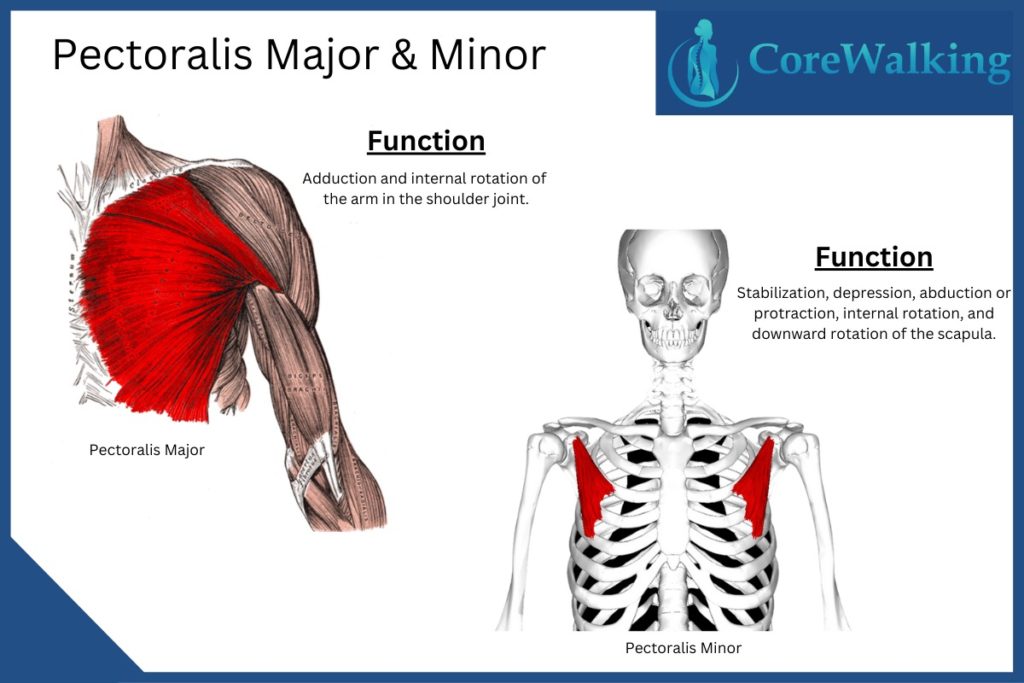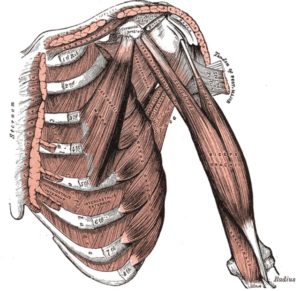 Many people think they are hunched forward with rounded shoulders.
Many people think they are hunched forward with rounded shoulders.
I think everyone leans backward with rounded shoulders.
This might seem counter-intuitive but I think that the shoulders rounded forward are often a result of the upper spine leaning backward.
There is one muscle in particular that is responsible for our rounded shoulder issues.
Pectoralis minor is a thin triangular muscle that inserts onto the coracoid process of the scapula, or shoulder blade.
Since it connects on the top of the shoulder blade, when it engages it can pull the shoulder blade forward and down.
It also functions to draw the shoulder blades away from each other. Imagine hugging yourself.
The pectoralis minor has some similarities to another troubling muscle, the piriformis.
I refer to them both as nasty little muscles. They are each triangular in shape and whereas the piriformis connects the leg to the spine at the back of the body, the pectoralis minor connects the shoulder blade to the ribcage at the front of the body.
The piriformis tends to shorten due to postural imbalances from the leg bones turning out while the pectoralis minor tends to shorten from the arm bones turning in.
The pectoralis minor lies underneath the pectoralis major, a thick, broad muscle that covers the upper chest.
The pectoralis major flexes the humerus, the bone of the upper arm, (picking up a baby), it draws the humerus away from the body (bringing the arms up overhead in yoga), and across the body (hugging yourself), in a somewhat similar way to the pectoralis minor.
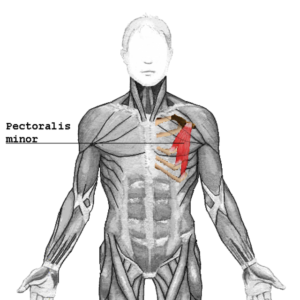
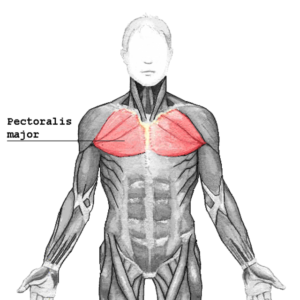
These two muscles that overlap are supposed to glide over each other with distinction.
Pectoralis minor moves from the back to the front of the body while pectoralis major moves from the outside to the inside in the front plane of the body.
Unfortunately what often happens is that these muscles get glued together (a rolfing term) and begin to move as one unit.
Instead of doing their gliding thing, they each have diminished capacity. Especially as pectoralis minor gets tight.
As a muscle underlying the pectoralis major, if the pectoralis minor shortens it will be a drag on the pectoralis major, limiting its range of motion to what the tight pectoralis minor will allow.
A similar situation happens with the piriformis. If it is tight, the gluteus medius and minimus above it will not be able to function effectively.
Here is a classic stretch for pectoralis major and minor.
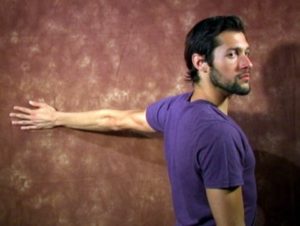
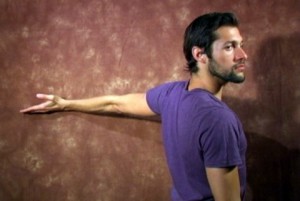
Part 1
- Place your hand flat on the wall at the height of your shoulder.
- With the feet and shoulders about a foot away from the wall, turn your torso away to stretch the chest.
- If the stretch is in your arm bend the elbow slightly.
Part 2
- Turn your palm up with the pinky side of the hand against the wall at the height of your shoulder.
- This is a stretch of pectoralis minor and should be deeper and sharper than the first one.
- Again, if the stretch is in your arm bend the elbow slightly.
This a great stretch to do at any time, especially if you are working long hours at a desk.
